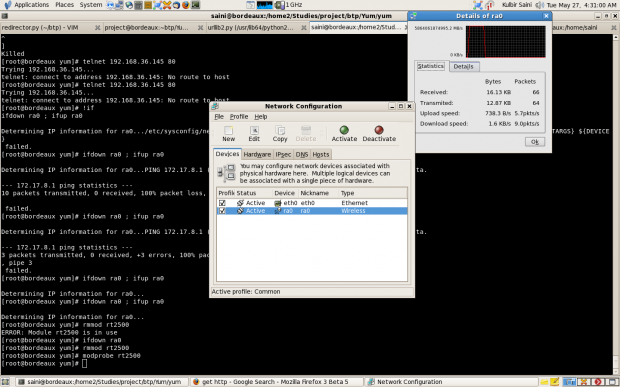Note : A newer version of intelligentmirror is available now. Please check this.
Intelligent Mirror is basically a tool or squid plugin (redirector) to cache rpm packages so that the subsequent requests for the same package can be served from the local cache which will eventually save a lot of bandwidth and downloading time.
Who needs Intelligent Mirror?
- If you are on a shared network where a lot of people use linux distros with RPM as their package manager, then you need this. Universities should come under this category.
- If you have a set of systems having red hat derivatives and almost identical OS versions, you need this. LAN setups at home should come under this category.
- If you can’t afford to or don’t want to mirror entire fedora repo for local access due to bandwidth limitations, you need this.
What it does?
As described above, Intelligent Mirror, just caches rpms which are requested by the clients in a shared network. And subsequent requests for those rpms are served from the cache. For a detailed description, check the project page.
Why not use Squid in caching mode?
Squid caching is based on url hashing. Let me explain with an example how Intelligent Mirror is actually intelligent as compared to squid while caching rpms.
Let us say there is an rpm yum-3.2.0-1.fc7.i386.rpm . You executed “yum update yum“. And let us say the newer version of yum is yum-3.2.18-1.fc9.i386.rpm which was fetched from one of the fedora mirrors http://abc.com/ (say). Now someone on the same network launched “yum update yum” and he got the same rpm yum-3.2.18-1.fc9.i386.rpm. But this time rpm was fetched from another mirror http://xyz.com/ (say).
Case I : Squid caching
Squid will cache http://abc.com/linux/fc9/updates/i386/yum-3.2.18-1.fc9.i386.rpm . And when http://xyz.com/linux/fc9/updates/i386/yum-3.2.18-1.fc9.i386.rpm will be requested, it’ll result in a cache miss and squid will again download the same package and will cache this one as well. Now there are two problems
- Squid is not able to serve from the cache, though the package was the same.
- Additional storage space is being wasted in caching the same package. And this can really harm if unluckily a different mirror is picked in all the subsequent queries.
Case II : IntelligentMirror caching
Intelligent Mirror will cache the package yum-3.2.18-1.fc9.i386.rpm without bothering about its origin. And even if yum picks up a different mirror for the subsequent request, the package will be served from the cache and will not be fetched from upstream. So, the obvious advantage of saving the bandwidth and downloading time.
Download
Intelligent Mirror source tarball, rpm, source rpm are available for download from here.
Installing and Configuring Intelligent Mirror
Issues and Suggestions
If you see any issue or you have any suggestions for improving the functionality, either mail me at kulbirsaini25 AT GMAIL DoT COM or file a ticket on the project page.
